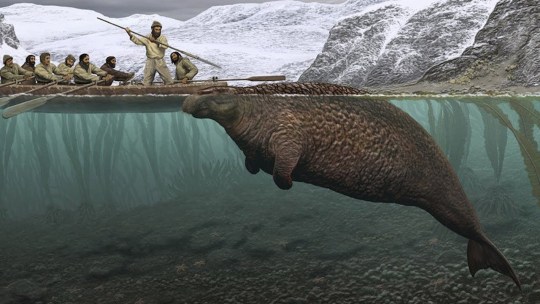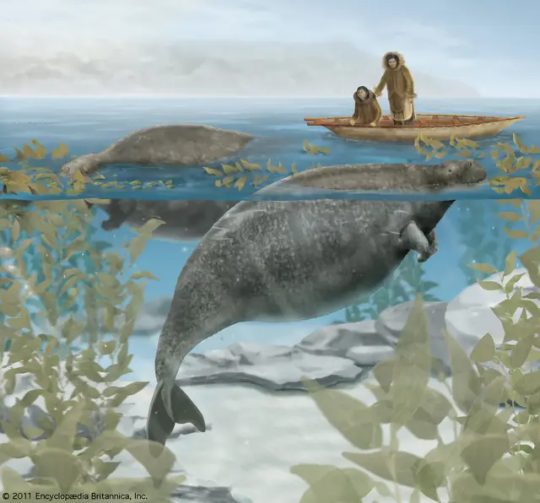#Steller's Sea Cows
Explore tagged Tumblr posts
Text
Time Travel Question : 19th Century IV and Earlier
These Questions are the result of suggestions from the previous iteration.
This category may include suggestions made too late to fall into the correct grouping.
Please add new suggestions below if you have them for future consideration.
#Time Travel#19th Century Paris#coca wine#absinthe#expressionists#19th Century#Pre-Raphaelites#Art History#Vienna#Statue of Liberty#Victor Hugo#Georg Wilhelm Steller#Steller's Sea Cows#18th Century#Extinct Animals#Sea Creatures#Duchess of Richmond#Brussels#Napoleonic Wars#Battle of Quatre Bras#South America#Charles Darwin#History of Science
171 notes
·
View notes
Text
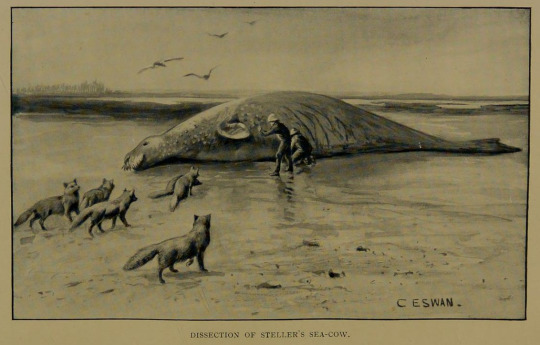
Wild Animals of Yesterday & To-Day. Written by Frank Finn. Illustrated by Cuthbert Edmund Swan. 1913.
Internet Archive
#recently extinct#sea cows#steller's sea cows#canines#foxes#arctic foxes#animal death#Cuthbert Edmund Swan
239 notes
·
View notes
Text
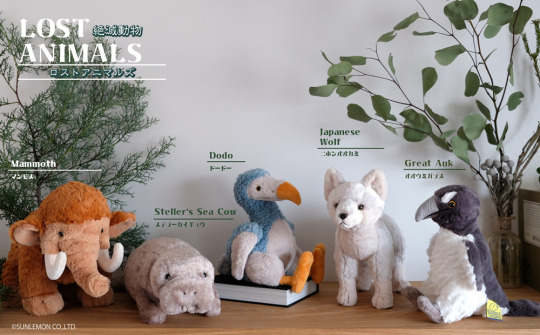
Sunlemon - LOST ANIMALS
#plush#plushie#plushies#plushblr#plushcore#toycore#soft toy#stuffed animals#sunlemon#lost animals#extinct animals#mammoth#steller's sea cow#dodo#japanese wolf#great auk#plush: prehistoric#plush: pachyderm#marine mammals#plush: bird#plush: wolf#plush: canine
2K notes
·
View notes
Text

zoology joke
3K notes
·
View notes
Text

Steller's sea cow - a recently extinct giant sirenian, related to modern dugongs and manatees. They went extinct in XVIII century, but their exctinction wasn't just because of europeans, we know that the last populations near Kamchatka were already on the brink of exctinction.

These huge animals could reach 9 metres in length and weight 10 tonnes, making them the largest aquatic non-cetacean mammal we know. They were algae eaters, feeding on kelp. Unlike modern sirenians, they didn't have teeth and used two keratin plates in their mouths for chewing. After feeding, according to Steller they'd lie on their backs and nap. Steller also observed an interesting mutualistic behaviour between sea cows and gulls (probably slaty-backed gulls), as these birds would eat parasites from the sea cow's back, like oxpeckers and rhinos.

The slaty-backed gull is one of the seabirds native to areas where sea cows used to live, and while we can't be sure which species of seabird fed on parasites of these large mammals, the opportunistic nature of seagulls makes them good contenders for the spot.

Despite their appearance, sea cows weren't stupid animals, they lived in large herds, looked after their young and were probably monogamous. Steller observed that they kept their calves in the middle of the herd or near the shore. This could have been caused by their predators.

Killer whales, specifically Bigg's killer whales, which are known to hunt other mammals, are the most likely predators of Steller's sea cow, apart from humans. While they might have trouble killing a large cow, especially in a herd, a small calf might be a meal worth the risk.

#3d#steller's sea cow#sirenian#sea cow#killer whale#orca#seagull#blender#lowpoly#paleoart#paleontology#nature#animals
145 notes
·
View notes
Text

Cryptid of the Day: Steller’s Sea Cow
Description: The Steller Sea Cow is one of many fantastic creatures that went extinct through overhunting. However, since its extinction, there have been many people who claimed to have seen the animal. The most recent sighting occurred in 1976 off the coast of Anapkinskaya Bay.
163 notes
·
View notes
Photo

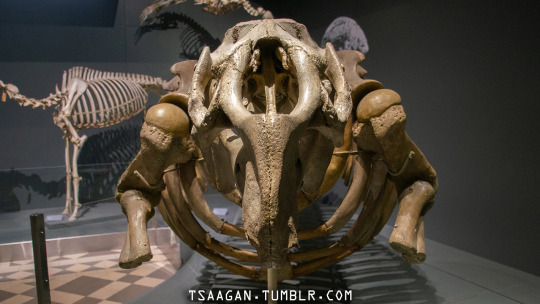
Steller’s sea cow Hydrodamalis gigas
The Finnish Museum of Natural History, Helsinki, Finland
224 notes
·
View notes
Text

Various objects carved from "mermaid ivory," from the private collection of professor Lorelei Crerar. [x]
Manatees and dugongs are protected species, but because the Steller's sea cow has been extinct for over 200 years, trade in their bones is actually legal under the Endangered Species Act and related international laws.
Steller's sea cow bones are sometimes called "mermaid ivory," although this nickname is sometimes used for walrus bones as well. When tested, some of Crerar's collection came back containing whale or dolphin DNA, but some were genuine Steller's sea cow bones from a previously unknown population.
106 notes
·
View notes
Text

Mermay 2024 Day 11 - Cowboy
#art#auri draws#drawing#artist#artists on tumblr#merfolk#mermay 2024#mermaid#original art#steller's sea cow#merperson#merman
12 notes
·
View notes
Text
First Wet Beast Wednesday of the year! So without further ado…
All animals will behave as they would in the wild (or as close to for all extinct species) except that your defender(s) will not cause friendly fire. However, any attempt to attack and/or eat your defender(s) will cause them to turn on you.
#poll#wet beast wednesday#invertibrates#cnidarians#jellyfish#crustaceans#lobster#radiodonts#fish#sharks#deep sea fish#cetaceans#whales#sirenia#Steller’s sea cow#extinct species#marine life#marine biology
25 notes
·
View notes
Text
It's sad to me, how few people up here know we used to have our own sea cow. And yeah, they went extinct in the 1760s, and they're a more obscure one, but it's still sad.
3 notes
·
View notes
Text
Within 27 years of its discovery by Europeans, the slow-moving and easily-caught mammal was hunted into extinction for its meat, fat, and hide.
most normal european reaction to discovering something new
5 notes
·
View notes
Text

#steller's sea cow#was basically a giant manatee#was very friendly and fat#and it just floated around the surface of kelp forests#like it was positively buoyant so it couldn't submerge itself#was hunted to extinction
1 note
·
View note
Text

Steller’s Sea Cow (1768)
Steller’s marine Cow, also known as Hydrodamalis gigas, was a massive marine mammal that consumed plants and had an appearance that was related to that of the manatee. However, it has the potential to reach a length of up to 30 feet (9 meters). Georg Wilhelm Steller was the one who made the discovery, and within thirty years, Europeans had pursued it to the point of extinction through hunting.Readmore
0 notes
Text
steller’s sea cows are so big dude. you dont even get how big they are. they are big as a kitchen
1 note
·
View note
